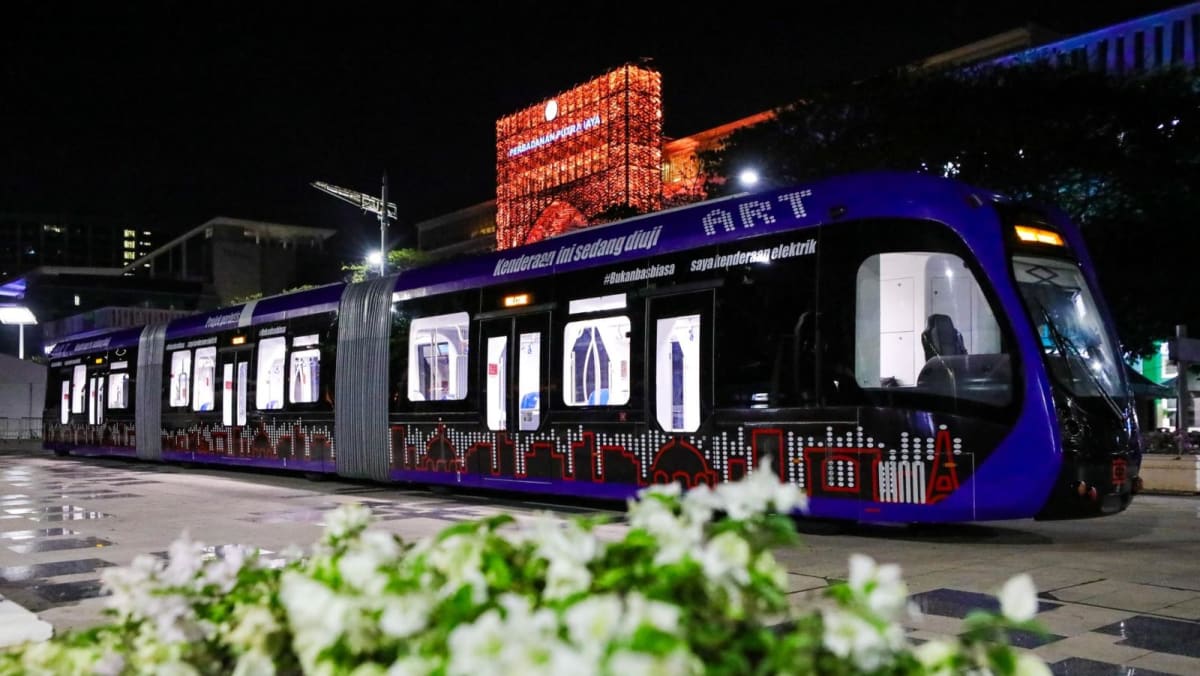Asia
Malaysia government picks bus-tram network over light rail transit system for southern Johor: Transport minister

A New Era for Johor Bahru’s Transportation: Easing Congestion with an Elevated Bus-Tram Network
In a move to tackle the growing traffic congestion in southern Johor, the Malaysian federal government has announced its decision to implement a public bus-tram network in Johor Bahru. This decision, revealed by Transport Minister Anthony Loke on February 13, marks a significant step toward addressing the region’s public transportation challenges. The chosen system, known as the autonomous rail rapid transit (ART), is designed to provide a modern, efficient, and flexible solution to the area’s traffic woes.
The Decision: Autonomous Rail Rapid Transit (ART)
The selection of the ART system ends months of speculation about whether the government would opt for an elevated bus-tram network or a light rail transit (LRT) system. Speaking at a media conference, Loke confirmed that the ART system has been chosen for its flexibility and faster implementation timeline. Unlike the LRT, which is more complex and time-consuming to build, the ART system is expected to be completed in a shorter time frame, making it the preferred choice for addressing the urgent need for improved public transportation in Johor Bahru.
Why ART? Flexibility and Speed
The ART system offers several advantages that made it the ideal choice for Johor Bahru. It features elevated viaducts and dedicated lanes, combining the benefits of both buses and trains. This bus-rail hybrid concept allows for greater flexibility in routing and operations compared to traditional LRT systems. Additionally, the ART system can be constructed much faster, which is crucial given the looming deadline for the Johor Bahru-Singapore Rapid Transit System (RTS) Link, scheduled to begin operations by the end of 2026.
A Collaborative Decision
The decision to proceed with the ART system was also influenced by the Johor state government’s request for a faster and more adaptable solution. Loke emphasized that the state government, led by Chief Minister Onn Hafiz Ghazi, expressed a strong preference for the ART system due to its quicker implementation. This collaborative approach between the federal and state governments underscores the importance of aligning priorities to address the region’s transportation needs effectively.
Next Steps: Tender Process and Implementation
Following the Cabinet’s approval of the ART system, the public-private partnership unit (UKAS) under the Prime Minister’s Department has been tasked with issuing a tender for the project. This step marks the beginning of the implementation phase, which is expected to move swiftly to meet the 2026 deadline. The integration of the ART system with existing and upcoming projects, such as the Bukit Chagar station of the Johor Bahru-Singapore RTS Link, will be a key focus of the development process.
Looking Ahead: Transforming Johor Bahru’s Future
The introduction of the ART system represents a significant milestone in Johor Bahru’s journey toward becoming a more livable and sustainable city. By providing a reliable and efficient public transportation network, the ART system is expected to reduce traffic congestion, improve air quality, and enhance the overall quality of life for residents and visitors alike. This project not only addresses the immediate challenges of urbanization but also lays the foundation for a more connected and modern transportation infrastructure in southern Johor.